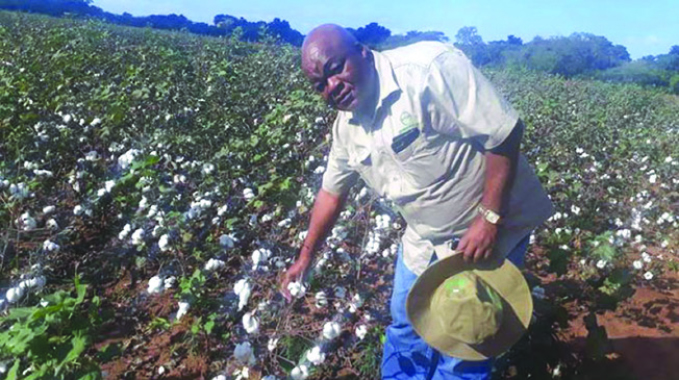
Business Reporter
After back-to-back droughts battered Zimbabwe’s agricultural production, cotton producers are looking for better yields this season on the back of anticipated good rains.
Production of raw cotton was badly affected during the past two seasons due to poor rains which also hurt output of other major crops such as tobacco and maize.
This year, Zimbabwe is expected to receive normal to above normal rainfall with cotton farmers expressing optimism about the 2020/21 season.
“The past two seasons were not so good for us due to prolonged dry spells and this affected yields even though we had been given all the inputs under the Presidential Inputs Scheme,” Mr Charles Ruzhani, a 53-year-old farmer in Mutoko in the Mashonaland East Province said.
“Cotton is naturally a drought resistant crop, but under severe dry conditions, the yields are affected.”
The Presidential Inputs Scheme, administered by The Cotton Company of Zimbabwe, has been supporting thousands of communal farmers since 2015.
It was introduced to revive the sector after production plunged to 28 000 tonnes, the lowest in nearly two decades.
Production, however, gradually rebounded, reaching 144 000 tonnes in 2017. However, as a result of successive droughts again, output declined to about 74 000 tonnes in 2019 before slightly increasing to 80 000 tonnes this year.
Poor rains also affected production of tobacco, the country’s second single largest foreign currency earner after gold, which declined from the record 252 million kilogrammes.
“With the prospects of good rains we are hopeful of better cotton yields because we have already received all the inputs, we have done land preparation . . . It’s looking good,” another farmer in Mutawatawa Ms Rutendo Dandemudande said.
Cottco managing director Mr Pious Manamike, said inputs distribution was at an advanced stage.
“We are much ahead compared to other seasons in terms of distribution of seed and basal fertiliser,” Mr Manamike told The Herald Finance & Business in an interview yesterday.
Under the Scheme, farmers receive a package of inputs which comprises 100 kg of basal fertiliser, 50 kg of calcium ammonium nitrate, 20 kg of seed to cover one hectare.
Farmers are also given chemicals. Apart from inputs, Cottco is also running a free tillage programme which was introduced to partly help farmers without drought power and also to climate proof cotton production in light of climate change.
In Mutoko, the tillage programme saw Cottco increasing hactrage to 101 000 from 60 000 last year. Cotton plays a significant role in uplifting people’s lives especially in the rural areas and it is a crop that can help the nation in the fight against poverty.
Under the National Development Strategy 1, launched by President Mnangagwa this week, the country is target cotton production of 265 000 by 2025. This will go a long way in rejuvenating the rural economy, one of the key priorities of the NDS1, a pathway of transforming Zimbabwe into an upper middle income economy by 2030.
At peak, cotton production reached 352 000 tonnes in 2012 as farmers were largely attracted by strong prices.
